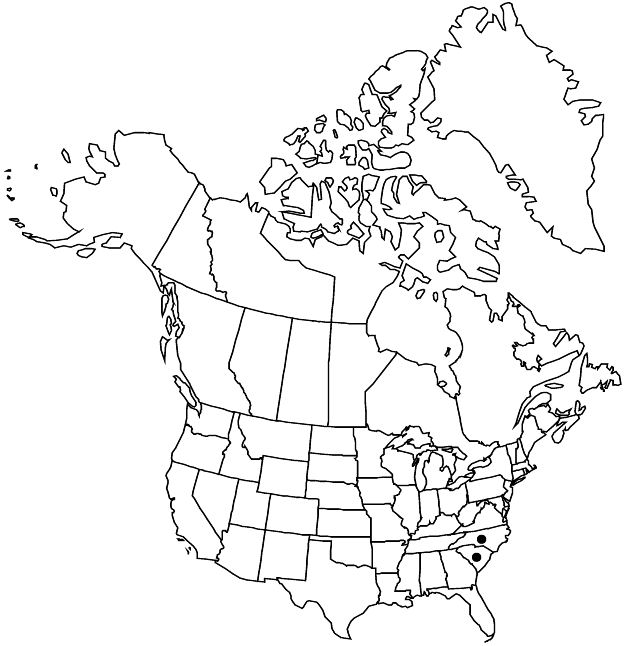Difference between revisions of "Crataegus colonica"
Biltmore Bot. Stud. 1: 104. 1902.
FNA>Volume Importer |
FNA>Volume Importer |
||
| Line 15: | Line 15: | ||
|name=Crataegus lassa var. colonica | |name=Crataegus lassa var. colonica | ||
|authority=(Beadle) Lance | |authority=(Beadle) Lance | ||
| + | |rank=variety | ||
}} | }} | ||
|hierarchy=Rosaceae;Rosaceae subfam. Amygdaloideae;Rosaceae tribe Gillenieae;Crataegus;Crataegus sect. Coccineae;Crataegus (sect. Coccineae) ser. Lacrimatae;Crataegus colonica | |hierarchy=Rosaceae;Rosaceae subfam. Amygdaloideae;Rosaceae tribe Gillenieae;Crataegus;Crataegus sect. Coccineae;Crataegus (sect. Coccineae) ser. Lacrimatae;Crataegus colonica | ||
| Line 39: | Line 40: | ||
-->{{#Taxon: | -->{{#Taxon: | ||
name=Crataegus colonica | name=Crataegus colonica | ||
| − | |||
|authority=Beadle | |authority=Beadle | ||
|rank=species | |rank=species | ||
| Line 54: | Line 54: | ||
|publication year=1902 | |publication year=1902 | ||
|special status=Endemic | |special status=Endemic | ||
| − | |source xml=https://jpend@bitbucket.org/aafc-mbb/fna-data-curation.git/src/ | + | |source xml=https://jpend@bitbucket.org/aafc-mbb/fna-data-curation.git/src/f50eec43f223ca0e34566be0b046453a0960e173/coarse_grained_fna_xml/V9/V9_1074.xml |
|subfamily=Rosaceae subfam. Amygdaloideae | |subfamily=Rosaceae subfam. Amygdaloideae | ||
|tribe=Rosaceae tribe Gillenieae | |tribe=Rosaceae tribe Gillenieae | ||
Revision as of 23:37, 16 December 2019
Shrubs, 15–30 dm, branches ± weeping. Stems: trunk bark ashy gray, rough or scaly; twigs: new growth densely white-canescent, 1-year old purple-brown or blackish, older dark gray, ± stout; thorns on twigs usually numerous, straight or slightly recurved, 1-year old blackish or purple-brown, moderately stout, 2–4.5 cm. Leaves: petiole length 15% blade, winged distally, densely pubescent, glandularity not recorded; blade obovate, 1.5–2.5(–3) cm, stiff, ± coriaceous, base gradually tapered, lobes 0, margins basally entire or subentire, distally ± denticulate, veins 2–4(or 5) per side (except smaller leaves), apex acute and ± cuspidate to ± obtuse, abaxial surface white-tomentose at anthesis, particularly on veins, adaxial glabrescent. Inflorescences 2–4-flowered; branches tomentose; bracteoles oblong-linear, margins sessile-glandular, adaxially thin pubescent. Flowers 12–15 mm diam.; hypanthium tomentose; sepals narrowly triangular, 4 mm, margins finely glandular-serrate, abaxially ± tomentose; anthers cream or ivory; styles 3–5. Pomes green turning red or blushed red, pyriform or suborbicular, 6–9 mm diam., pubescent; sepals spreading; pyrenes 3–5.
Phenology: Flowering early to mid Apr; fruiting Aug.
Habitat: Sand hills, dry sandy woodlands, sandy roadsides
Elevation: 0–100 m
Discussion
Crataegus colonica is particularly abundant in south-central North Carolina. Very thorny species are unusual in ser. Lacrimatae, and C. colonica shares this, as well as habit, small leaves, and distribution with C. pexa. From the latter, it is distinguished by a distinctive leaf shape reminiscent of forms of C. crus-galli, relatively small, more or less pyriform fruits and shorter and less often numerous thorns. Crataegus colonica and C. pexa could represent two poles of the same species.
Selected References
None.
